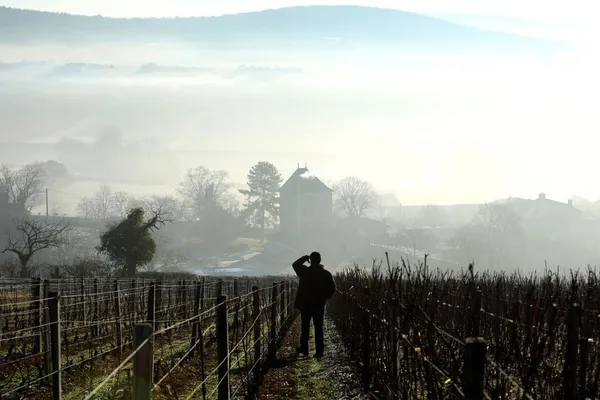Free delivery from Fr. 300 of purchase or 18 bottles, otherwise Fr. 15

Son and grandson of a winegrower, Nicolas Maillet took over the family estate in 1999, after obtaining a diploma in agricultural engineering, followed by a national diploma in oenology in Montpellier. In the wake of this, he undertook internships at various estates around the world. It was on his return that he departed from the traditional path of local viticulture. With his father, he first "took" his wines out of the cooperative in order to resume the activity in private cellars, as it was practiced before 1928. With a few hectares at the beginning, he gradually increased the size of the estate to reach about seven hectares in 2013. Then, he took the opposite direction of conventional methods, orienting the estate towards organic farming with the Ecocert label since the 2008 vintage. Finally, he was inspired by the vinification methods of the famous Mâcon winemaker Jean Thevenet to produce wines that are vinified for a long period of time in reduction and without ageing in wood.At the estate, the vines are planted in the Mâcon arcure, essentially with Chardonnay. The vineyard is planted at a density of 11,000 vines per hectare. Treatments are therefore carried out in accordance with organic farming methods, using sulphur and copper. As some of the conventionally farmed plots are very close to Nicolas Maillet's, he sometimes treats the first five rows of his neighbour's vineyard as well, in order to limit the impact of the chemicals on his own vineyard. The vines are cavailloned in winter and decavailloned in spring. The rows are worked with a pickaxe or, more recently, with a horse. The heaviest soils can be grassed over in the inter-row. The harvest is done manually and the grapes are transported in 35 kg crates. The grapes are transported in 35 kg crates and may be picked twice, so that only perfectly ripe grapes are collected. When they arrive in the cellar, the grapes are carefully pressed and then vatted for two to three days before alcoholic fermentation. Nicolas Maillet's aim here is to ensure that the vinification takes place in clear juice, on fine lees. After settling, the alcoholic fermentation begins using indigenous yeasts. Vinification takes place in closed tanks at low temperature. This means that they can continue for several months, without any intervention. Malolactic fermentation takes place in the same way. After nine to eleven months (depending on the vintage), the wines can be bottled directly from the tank. They are not aged in contact with the air and do not go into wood, which is rare, especially for Chardonnay from Burgundy.In the Mâcon region, Nicolas Maillet is now one of the leading winemakers. He has quickly made a name for himself in a region that has long lived in the shadow of the Côte d'Or. It has to be said that Nicolas has an easy way with words and a rather ebullient character. But he is a winegrower who dares, takes risks, tries things out and goes beyond what is commonly practiced. The result is wines which are certainly very accessible, easy to drink, but greedy, aromatically very expressive and which, moreover, are capable - for the best vintages - of standing the test of time, which does not spoil anything.
The wines of the domain Nicolas Maillet :
4 items

VdF Savagnin, Melting Potes, Nicolas Maillet
Vin de France
Public price
22,00 CHF

Mâcon Igé, Nicolas Maillet - 2023
Mâcon
Public price
23,50 CHF

Mâcon Verzé, Nicolas Maillet - 2022
Mâcon
Public price
23,50 CHF

Mâcon-Verzé, Le Chemin Blanc, Nicolas Maillet - 2023
Mâcon
Public price
29,00 CHF

